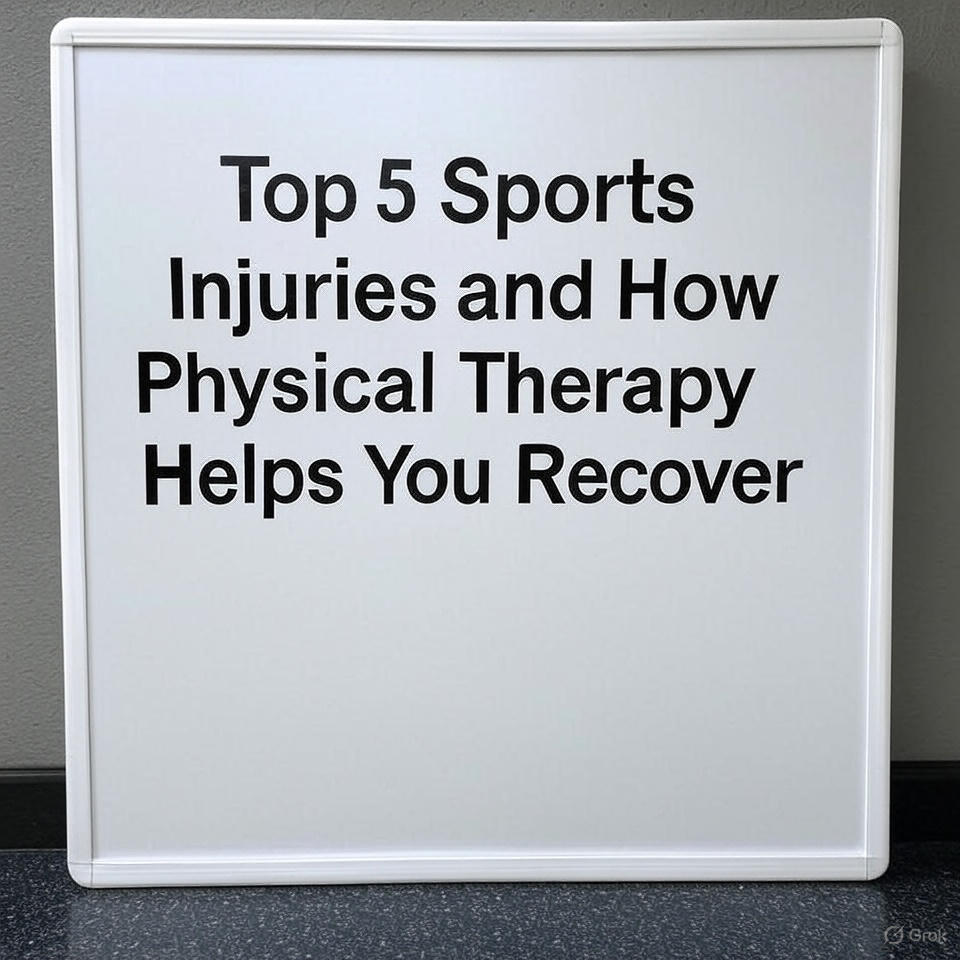Engaging in sports is a great way to stay active, improve health, and build community, but athletic activity also brings a higher risk of injury. Fortunately, physical therapy for athletes offers effective, research-backed solutions for recovery. In this blog, we’ll cover the five most common sports injuries and explain how physical therapy can guide your healing process and help prevent future injuries.
1. Sprains and Strains
Sprains and strains are among the most frequent injuries in sports. A sprain occurs when a ligament is stretched or torn, often from twisting or impact. A strain affects muscles or tendons and typically results from overstretching or overuse.
Physical therapy addresses these injuries with a combination of rest, movement, and strengthening. Therapists use techniques like gentle stretching, manual therapy, and progressive resistance exercises to reduce pain, improve mobility, and restore strength. Balance and stability training also helps athletes avoid future injuries by reinforcing proper joint function.
2. ACL Tears
An ACL tear is a serious knee injury that commonly affects athletes in soccer, basketball, football, and other sports requiring quick pivots and stops. The anterior cruciate ligament stabilizes the knee joint, and when torn, it often requires surgery and intensive rehabilitation.
Physical therapy plays a crucial role in both pre- and post-operative care. Pre-surgical PT helps reduce swelling and maintain strength, while post-surgical rehab focuses on restoring range of motion, building strength in the surrounding muscles, and gradually reintroducing dynamic movements. A physical therapist also works with athletes on sport-specific drills to ensure a safe return to activity.
3. Tennis Elbow
Also known as lateral epicondylitis, tennis elbow is an overuse injury caused by repetitive movements involving the wrist and forearm. Though it’s common in racquet sports, it also affects golfers, weightlifters, and manual laborers.
Physical therapists address tennis elbow with a mix of hands-on treatment and targeted exercises. Soft tissue mobilization, eccentric strengthening, and flexibility training help relieve pain and promote tendon healing. A PT can also guide you in modifying your movement patterns or equipment use to avoid re-injury.
4. Hamstring Strains
Hamstring strains occur when one or more of the muscles in the back of the thigh are overstretched or torn, often during sprinting, jumping, or sudden starts and stops. This injury can range from mild discomfort to a complete muscle tear, sidelining athletes for weeks.
In physical therapy, the recovery process includes a progression from gentle stretches and range-of-motion work to strengthening and dynamic movement training. Therapists focus on improving flexibility, building strength, and correcting any biomechanical issues that may have contributed to the injury. This ensures a safer and more confident return to sports.
5. Shin Splints
Shin splints, or medial tibial stress syndrome, are a common overuse injury, especially among runners and dancers. The condition causes aching or sharp pain along the inner edge of the shinbone, typically brought on by repetitive stress or sudden increases in training intensity.
Treatment begins with rest and pain management. Physical therapy helps correct the root causes of shin splints through exercises that improve ankle stability, foot mechanics, and lower leg strength. Therapists also evaluate running form, footwear, and training habits to prevent recurrence and ensure long-term results.
The Role of Physical Therapy in Recovery and Prevention
In every case, physical therapy does more than just help an athlete recover; it also helps them return stronger, more balanced, and more informed. Skilled therapists assess the body holistically to correct movement imbalances, enhance mobility, and build functional strength tailored to each athlete’s sport and position. By working with a physical therapist, athletes not only heal but also gain valuable tools to avoid future injuries, improve performance, and extend their athletic careers.





